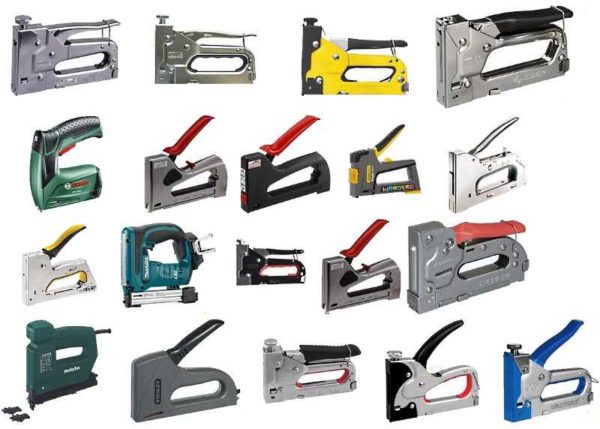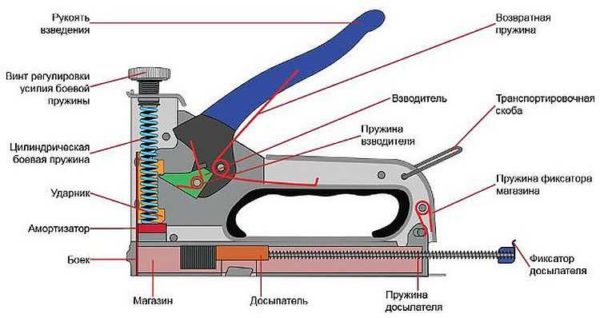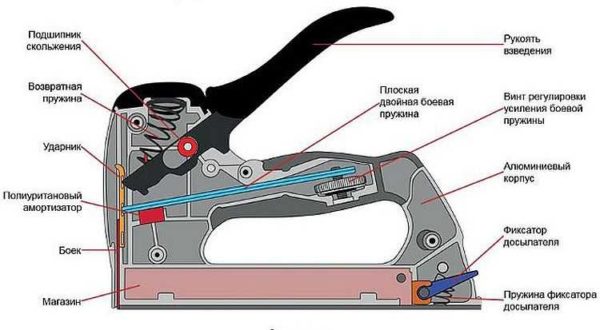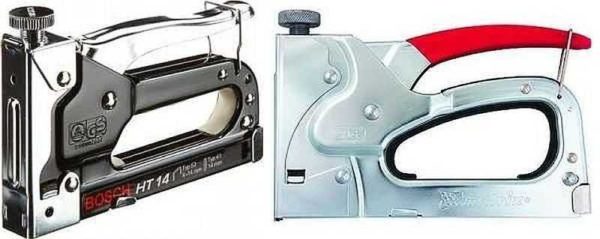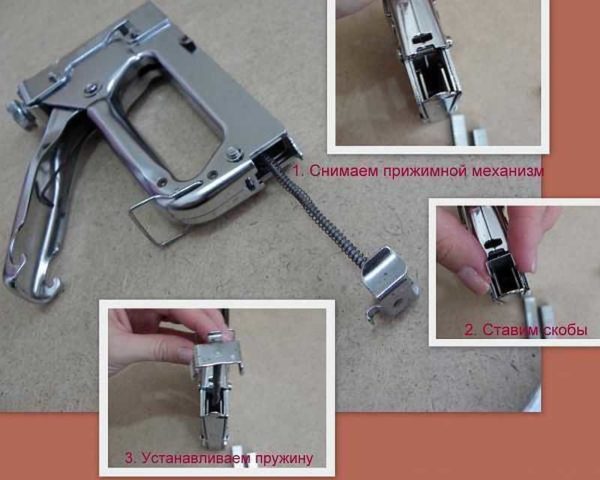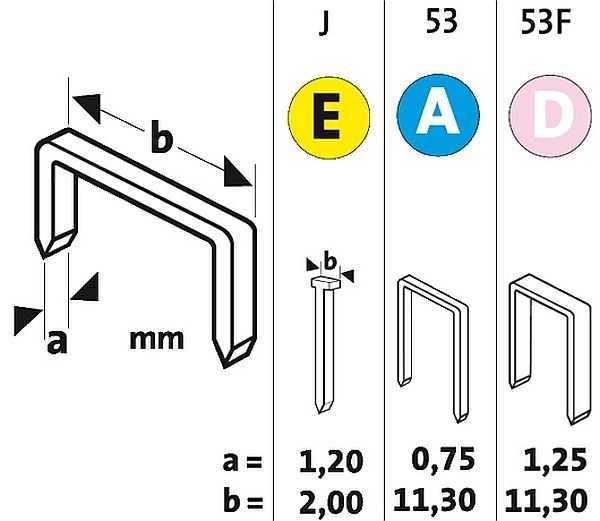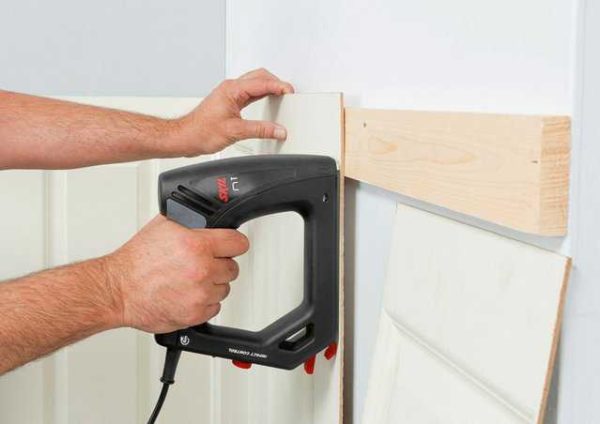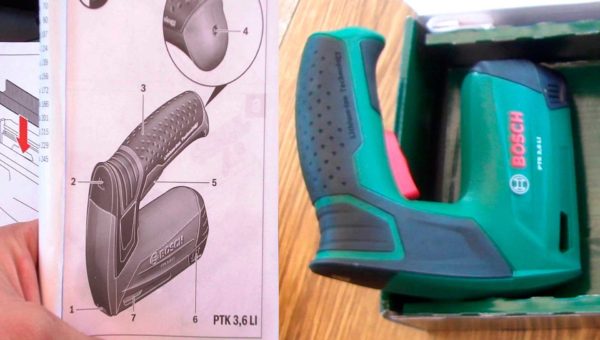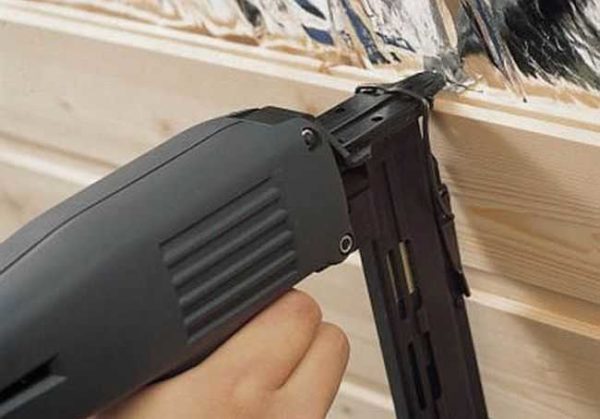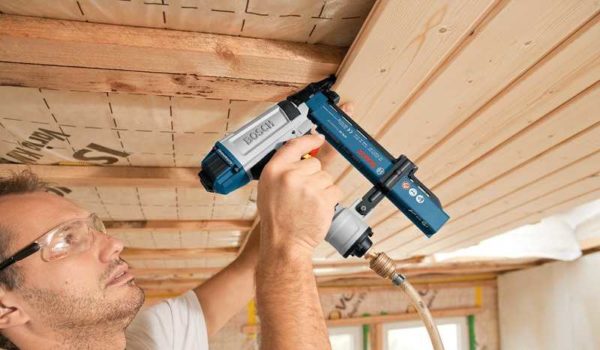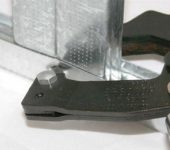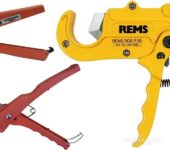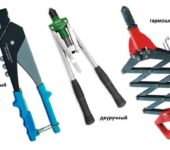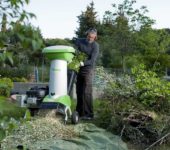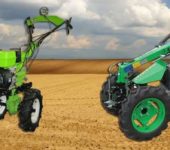Construction staplers: mechanical, electrical, pneumatic
Nail the lining, film or vapor barrier to the lathing, upholstery orChipboard to furniture - a construction stapler can do it all. This device is also called staple gun, stapler, nailer, staple gun and tacker.
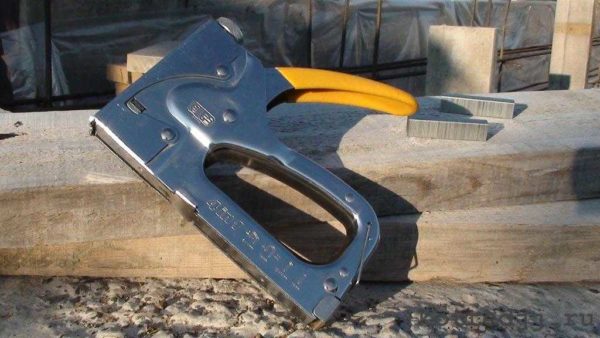
The content of the article
Types of staplers
The first step is to decide what type of staples you want. By the type of driving force, construction staplers are:
- Mechanical. They are driven by the force of the hands, have a low productivity, a small number of staples that can be "tucked in" into it. With such equipment it is quite difficult to work with solid materials - you have to make significant efforts. But mechanical staplers are small and lightweight, which allows working in awkward positions. They are also attracted by their low price, although there are models with a rather high price tag.
- Electrical. The brace flies out after pulling the trigger, but electricity drives the trigger. There are models powered by the network, there are - on batteries. Naturally, productivity is higher than that of manual staplers, but prices are also much higher, especially for cordless staplers. Also larger dimensions. Moreover, for models powered by a network, the cord interferes and limits movement, and for battery models, weight and a cumbersome handle are inconvenient - the battery is usually attached to it from below. But physical effort is minimal.
- Pneumatic. The driving force is compressed air, under the influence of which scrapes or nails fly out of the store. They also have high productivity and a large magazine that can hold a large number of staples or nails. But the hose from the compressor (and the noise from it) interferes even more than with electric models. Moving with such a unit is problematic. So this type of stapler is more suitable for professional use in a specific location.
If you need a construction stapler for one-time work - only during the construction or finishing of a house, apartment, choose a mechanical or electrical one. Mechanical works in all conditions, electric only in places where there is electricity. Even battery models require periodic charging. Yes, you can buy a second set of batteries for them and while one is working, the second is being charged. But it also requires electricity to charge.
Pneumatic staplers are purchased mainly in workshops for professional use. For one-time work, this is too expensive and very noisy equipment.
Professional or household
Like all other tools, construction staplers are conventionally divided into professional and household. At the same time, the difference in price is very significant - at times. And this is justified. The point is in the functionality, the number of settings, operating modes and in the work resource. Household models have a small working life, as they are mainly made of plastic.
Professional models are made of steel, often stainless steel. They have plastic elements, but these are metal handle pads to soften the recoil. It is clear that they will work longer, and usually it is easier to work with them - the staples come in easier, less jamming, etc.
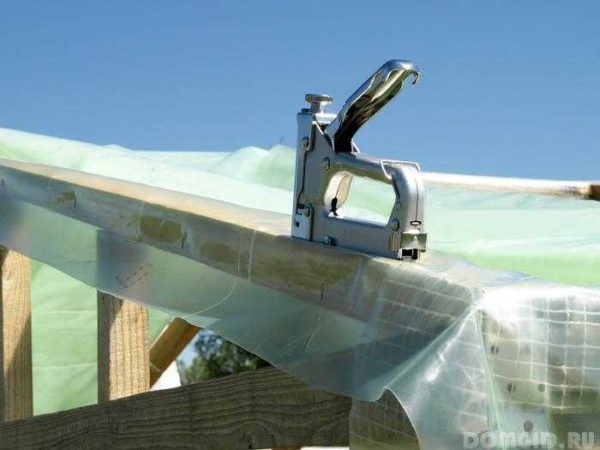
When choosing a manual construction stapler, you need to pay attention to the body, the height of the handle
There is also an intermediate class - semi-professional. They fall between these two categories in terms of price and quality. Often it is in this group that you should look for equipment for home use. It works fine and doesn't cost much.
How to choose a mechanical stapler
A mechanical stapler is one of the most common tools. It costs very little, but is used in many works and operations. In terms of structure, mechanical staplers are of two types: with a coil spring and a spring (plate).
Coiled spring staplers are the cheapest models. Such a tool belongs to the category of household. They are simple, but during operation it takes considerable effort to cock the mechanism again. In addition, over time, such springs lose some of their elasticity and begin to work worse. Another unpleasant moment is the great force of recoil. Such models are suitable for short-term use - the load is too heavy.
Professional mechanical construction staplers are made using flat leaf springs. They provide smoother operation, lower recoil, have a longer resource, but are more expensive.
If you plan on working for several hours, consider using this type of tool. It will justify itself, and there will be an application - a lot of any operations can be done with such a device. It is especially useful for those who try to do a lot with their own hands. During construction, it is used very often, and then it will come in handy on the farm.
Important points
When choosing any mechanical stapler, please note:
- The case must be collapsible - on screws. Then it is possible, if necessary, to disassemble it, clean and lubricate.
- How far is the handle from the body? The closer it is to the body, the easier it will be to work.
- On the possibility of adjusting the punching mechanism. When working with soft materials (pine, for example), the minimum value is set. So that the brace goes in, but the material does not wrinkle. When working with hardwoods, plywood, Chipboard, etc., you will have to make more efforts, otherwise the staples will not enter the material, and finishing them with a hammer is not the most fun activity.
- The presence of a double strike function. This is just right for working with hard materials. This mode of operation allows you to re-hit on an incompletely hammered bracket. In this case, a new one is not served.
Also, for safe transportation and storage, it is desirable to have a "shockless descent" function or the ability to jam the mechanism - often it is just a metal loop that is thrown over the handle.
How to refuel
The construction stapler has two types of magazine. It is more convenient to use if the store opens. Then refueling a construction stapler is as simple as a clerical one: the spring is pulled back, a block of staples is inserted, the spring is released. Everything, you can work. When working, at any time you can remove the jammed bracket, fix the block, etc.
If the store is retractable, it is also easy to insert the staples into the stapler: after releasing the latch, extend the spring, insert the staple block, return the spring to its place, fixing it in the flap.
With such a structure, it can be problematic to remove the stuck bracket. You will need to pry it out of the firing pin, and this can be dangerous - do not forget to lock the release mechanism.
What fasteners can work
There are three types of staples that mechanical staplers work with: U and U staples and pins (in the form of the letter T). Naturally, it is better if the device can work with all types, but these are usually not cheap models.Yes, and U-shaped brackets are needed mainly when laying a cable, and this, you see, is a specific job, and T-shaped brackets are rarely used, since they do not provide stable fastening, but they are indispensable if you need to make the fasteners as less noticeable as possible.
However, U-shaped staples are most often needed. They are almost universal, they are available with different backrest thicknesses and leg heights, they are selected for the type of work. The characteristics of the stapler usually indicate the maximum length of the legs that this unit can handle. On average, this is 10-15 mm. By this indicator, one can judge the power of the blow - the longer the staples can be hammered by the construction stapler, the more powerful it is and the easier it will cope with the work.
Electric construction stapler
An electric staple is necessary for frequent and long-term work, as well as in cases where large staples are required - the power of these devices is much higher. Average indicators - leg length 20-25 mm, and the maximum for some professional models up to 50 mm. Some models can work with nails, but such a function must be sought.
Main settings
The first indicator to pay attention to is the number of "shots" per minute. The average figure is 20-30 pieces, the high one is about 50. If such slowness is annoying, but in this case use pneumatic staplers. They are the most rapid-fire.
If we talk about electrical power, then it is relatively small - no more than 1.5 kW and almost all models operate from 220 V. If you are going to buy an electric stapler that works from the mains, pay attention to the length of the cord - the larger it is, the more convenient it is to work.
If you decide to purchase a rechargeable model, choose the one in which the battery capacity is larger or a second battery is included. It's also a good idea to know the charging time - the less the better. And one more thing: if you already have some rechargeable tools, it makes sense to buy a construction stapler of the same brand or with similar batteries - they will be interchangeable.
And finally, about the electrical part: see how long an electric stapler can work without interruption. That is, how long it will take with active use until the engine heats up. When overheated, the power is significantly reduced, the staples are less clogged. If such a situation arises, take a break.
But with all this, it must be taken into account that an electric construction stapler weighs from 1.5 to 2 kg, which is quite a lot if you have to work on vertical surfaces. Yes, the pulling force is minimal, but the weight is difficult to maintain over extended use. So, when choosing, we also pay attention to weight.
More about the appearance: the body is made of shock-resistant plastic, but it is better if the platform (lower part) is entirely made of metal.
Additional functions
It is convenient to adjust the operating mode to specific conditions if there is a smooth adjustment of the impact force. There are also switches that have several operating positions, which is also not bad.
Protection against arbitrary triggering will help prevent troubles. If the electric construction stapler has such a function, it "gives out" staples only when the working part comes into contact with some surface.
Pneumatic staplers
This type of tool is mainly used in medium to high power production. It is distinguished by its high productivity: a speed of 50-60 staples per minute is the norm. The pneumatic construction stapler differs in structure: there is no spring, the blow occurs due to the energy of compressed air. The air is supplied by the compressor, and the moment of supply is determined by pulling the trigger.In stationary models, this can be a foot pedal, but in manual models, the usual trigger or button.
When choosing, you should also pay attention to what kind of fasteners this unit can work with. By the way, they can drive even longer staples and nails - on average 50-80 mm, but you can also find those that work with 100 mm nails.
For this equipment, the most important parameter is working pressure. The minimum is 4 Bar, on average - 5-6 Bar. Accordingly, the compressor must guarantee the required pressure.
On the positive side, the pistol's light weight is only about 1 kg. And this despite the fact that they are mainly made of steel.
Staples for a stapler: types and selection
As already mentioned, each staple gun works with a specific fastener. When going to the store for new brackets, you need to know the type, or at least the dimensions. Information about the type of brackets is in the product passport or on the nameplate (metal plate) with information fixed to the body.
Staples are made from different metals:
- Aluminum. Not a bad choice for working with soft materials such as pine, but they simply do not fit into hard ones - they jam.
- Copper. An expensive option that is used in rooms with high humidity. They also work with soft materials.
- Steel. An inexpensive option that is good for hard materials too. But they have a drawback - they rust.
- Galvanized and stainless steel. Good choice but pricey. But reliable fasteners are obtained, and for any conditions.
In addition to the material and dimensions (the length of the legs and the width of the back), one must also look at whether the legs are sharpened or not. For soft materials this does not matter, but when working with hard materials it can be a decisive moment: sharpened ones are much easier to enter the densest boards or plastic.

